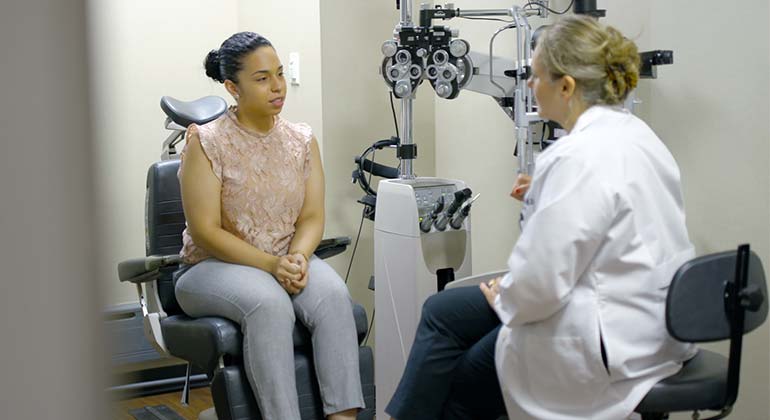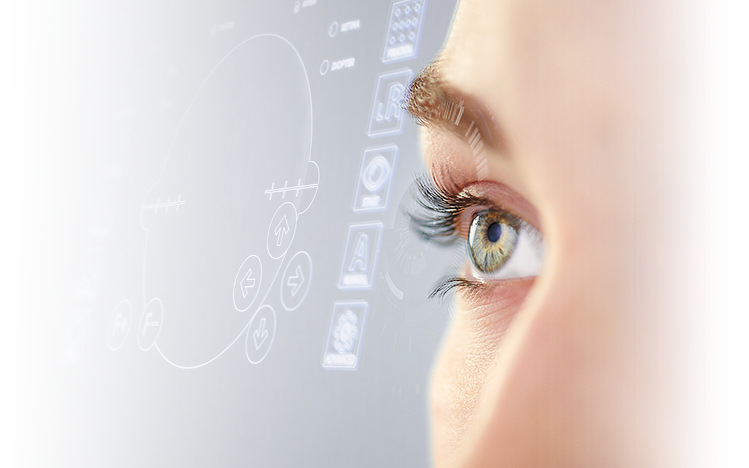Checking Out the State-of-the-Art Technologies Used for Diagnosing and Dealing With Eye Problems
In the world of ophthalmology, the evolution of modern technology has actually considerably enhanced the devices offered for diagnosing and dealing with different eye problems. From sophisticated imaging technologies that give in-depth insights right into ocular frameworks to robotic-assisted operations that use unrivaled accuracy, the landscape of eye care is constantly progressing. With the integration of expert system in diagnostics, genetics therapy technologies, and virtual fact rehabilitation, the opportunities for improving person outcomes are broadening at a rapid speed. The merging of these advanced modern technologies holds the guarantee of changing the field of ophthalmology, using new opportunities for individualized and effective treatments.

Advanced Imaging Technologies
Advanced Imaging Technologies have actually revolutionized the field of ophthalmology by supplying exact and thorough visualization of the eye structures. This non-invasive technique aids in the very early discovery and surveillance of numerous eye conditions such as macular degeneration, diabetic retinopathy, and glaucoma.
Moreover, Fundus Digital photography is another vital device in ocular imaging. This strategy entails capturing comprehensive pictures of the back of the eye, consisting of the retina and optic disc. Fundus Digital photography aids in recording the development of eye conditions, reviewing therapy efficacy, and educating patients about their eye health.

Robotic-Assisted Operation
Robotic-assisted procedures have considerably advanced the abilities of sensory surgical treatment, introducing a new age of precision and effectiveness in treating different eye conditions. By integrating robotic innovation into surgical procedures, ophthalmologists can achieve unparalleled accuracy and control, leading to boosted person end results.
Among the key advantages of robotic-assisted surgical treatment in ophthalmology is the enhanced dexterity and security it supplies to doctors. The robot arms can carry out accurate movements with a high level of precision, enabling for delicate treatments with marginal invasiveness. This level of precision is specifically valuable in surgical procedures including the retina, where even small errors can have significant effects for a person's vision.
Moreover, robotic-assisted surgical systems give real-time imaging and comments to the surgeon, allowing them to make educated decisions throughout the procedure. This modern technology improves the doctor's situational understanding and enables changes to be made immediately, ensuring optimum outcomes for the individual.
Expert System in Diagnostics
With the development of innovative modern technologies enhancing medical accuracy in sensory treatments, the integration of Expert system in diagnostics has become a crucial development transforming the field of eye treatment. Expert System (AI) algorithms are being significantly used to assess complex information from imaging technologies like optical comprehensibility tomography (OCT) and fundus digital photography to assist in the very early discovery and accurate site medical diagnosis of numerous eye conditions. These AI systems can effectively recognize patterns and anomalies in pictures that might not be discernible to the human eye, allowing quicker medical diagnosis and therapy planning.
AI algorithms can likewise anticipate condition development, advise personalized treatment plans, and assess the effectiveness of interventions. By improving the diagnostic process, AI not only Read More Here improves the effectiveness of eye care experts however likewise enhances client results by allowing timely interventions. As AI continues to advance, its role in diagnostics is expected to increase, supplying brand-new opportunities for very early intervention and customized treatment in the field of ophthalmology.
Genetics Treatment Advancements
In the realm of ophthalmic advancements, recent strides in genetics treatment developments have sparked substantial passion among researchers and medical care specialists alike. Gene therapy holds tremendous pledge in reinventing the treatment of various eye problems by targeting the underlying genetic reasons. By introducing genetic product into cells to make up for uncommon genes or to provide an absent gene, gene treatment provides a personalized strategy to attending to inherited eye problems such as retinitis pigmentosa, Leber hereditary amaurosis, and others that were previously thought about untreatable.

As study in genetics therapy remains to development, the capacity for tailored therapies for a broader series of eye problems expands, providing new wish for clients with genetic eye conditions.
Online Reality Recovery
Online fact rehab has arised as an innovative approach in boosting the healing and recovery processes for individuals with different visual disabilities. refractive surgeries in al. By simulating real-world settings through immersive modern technology, virtual fact provides an one-of-a-kind platform for vision treatment and rehabilitation. This ingenious method allows people to engage in interactive workouts and activities created to boost visual skill, deepness understanding, eye control, and overall visual performance
One key advantage of virtual reality rehabilitation is its ability to tailor therapy programs based upon the visit their website specific requirements and abilities of each client. Via real-time feedback and tracking, medical care professionals can track progress, change treatments, and provide customized like maximize outcomes. Additionally, online fact modern technology can create a risk-free and regulated room for individuals to practice visual tasks, get rid of obstacles, and construct confidence in an online setup prior to transitioning to real-world circumstances.
Verdict
In conclusion, the developments in imaging innovations, robotic-assisted surgical treatments, expert system diagnostics, genetics treatment technologies, and digital fact recovery have actually substantially boosted the medical diagnosis and therapy of eye conditions. retina service near me. These state-of-the-art technologies have actually changed the area of ophthalmology, permitting even more efficient and accurate treatments. As modern technology proceeds to develop, the future of eye care looks promising with the possibility for much more ingenious services to improve patient end results
In the world of ophthalmology, the development of technology has actually dramatically improved the tools readily available for detecting and treating various eye problems. Fundus Photography assists in recording the progression of eye diseases, reviewing treatment efficacy, and enlightening individuals about their eye wellness.
Man-made Intelligence (AI) formulas are being increasingly made use of to examine complex information from imaging technologies like optical comprehensibility tomography (OCT) and fundus photography to aid in the early discovery and precise medical diagnosis of different eye problems.In final thought, the advancements in imaging innovations, robotic-assisted surgeries, man-made intelligence diagnostics, genetics treatment developments, and digital reality recovery have substantially improved the diagnosis and therapy of eye conditions. As innovation proceeds to develop, the future of eye treatment looks promising with the capacity for also more innovative services to boost patient results.